Personal Training for People with Disabilities: How It Makes Life Better
Personal training can be a game-changer for people with disabilities, especially those with mental health conditions like autism. When someone has a disability, staying active and healthy can feel harder than it should be. That’s where personal trainers who understand disabilities come in to help.
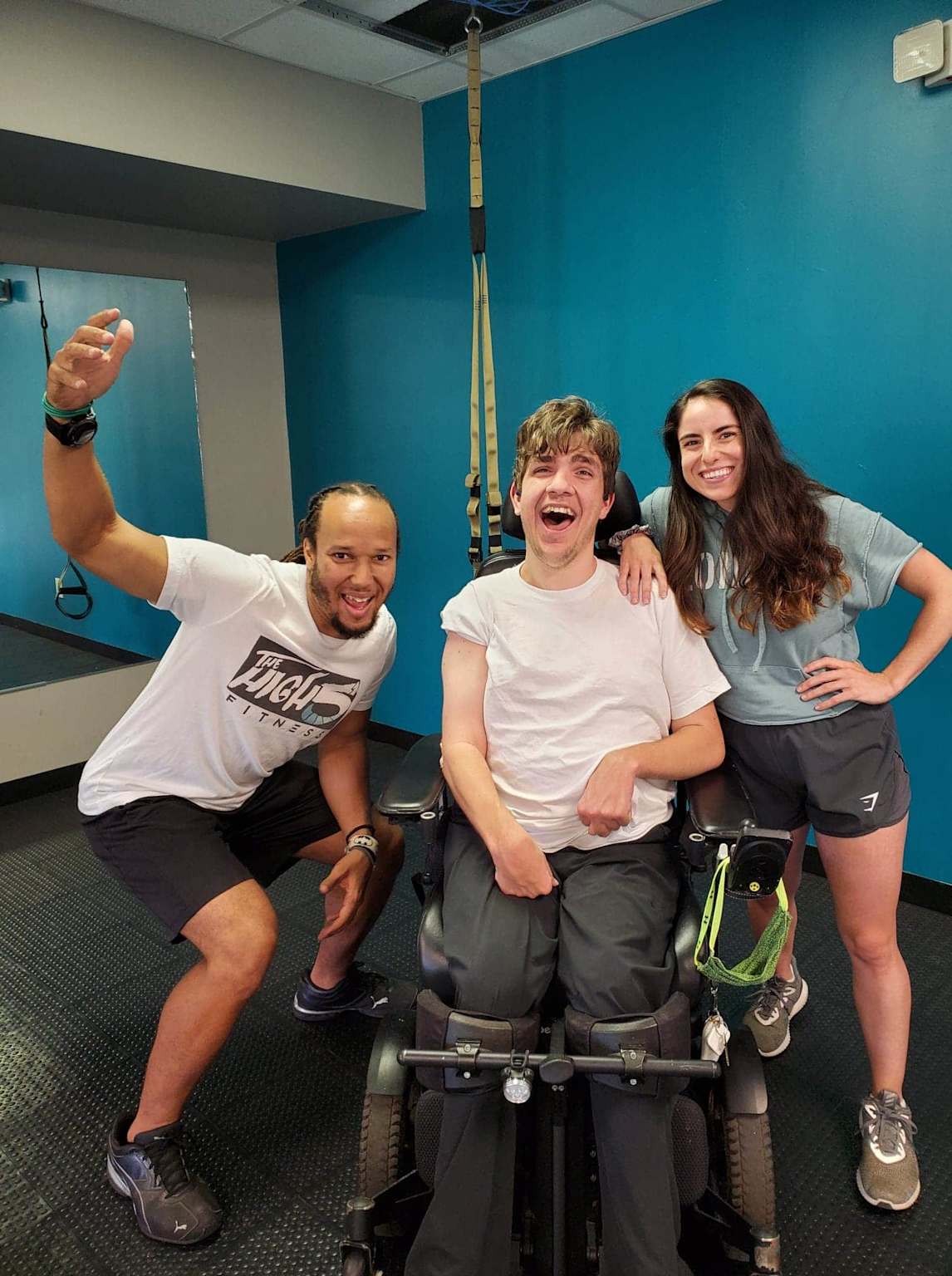
Personal training session with a client using a wheelchair, highlighting support and inclusivity in fitness for people with disabilities thehighfivefitness
What Makes Personal Training Special for People with Disabilities?
Regular personal trainers might not know how to work with someone who has autism, ADHD, or other mental health conditions. But trainers who specialize in working with people with disabilities understand that everyone learns and moves differently. They know how to change exercises to fit each person’s needs.
These special trainers create safe spaces where people don’t have to worry about being judged. They take time to understand each person’s strengths and challenges. Some people might need extra time to learn new movements. Others might need exercises explained in a different way. Good trainers know how to adapt.
How Personal Training Helps Your Body Get Stronger
When people with disabilities work with an ndis personal trainer, their bodies get stronger in many ways:
Better Balance and Coordination: Many people with autism or other conditions have trouble with balance. Personal trainers use special exercises to help improve balance and make movements smoother.
Stronger Muscles: Regular exercise makes muscles stronger. This helps people do everyday things like carrying groceries, climbing stairs, or playing with friends more easily.
Better Motor Skills: Motor skills are how well your body can move and control movements. Personal training helps improve both big movements (like running) and small movements (like writing).
A physical therapist guides a child through a balance exercise using a supportive cushion and platform in a colorful therapy room hiddentalentsaba
More Energy: Exercise gives people more energy throughout the day. When your body is stronger, you don’t get tired as quickly doing normal activities.
Better Flexibility: Stretching and moving in different ways helps your body stay flexible. This makes it easier to move around and reduces stiffness.
How Exercise Helps Your Mind and Emotions
Exercise isn’t just good for your body – it’s amazing for your mind too. Here’s how personal training helps people with disabilities feel better emotionally:
Less Stress and Worry: When you exercise, your brain releases special chemicals called endorphins. These are like natural happy pills that make you feel good and less worried.
Better Sleep: People with autism often have trouble sleeping. Regular exercise helps tire out your body in a good way, making it easier to fall asleep and sleep better.
Less Repetitive Behaviors: Some people with autism do repetitive movements when they’re stressed. Exercise gives them a healthy way to move their body and can reduce these behaviors.
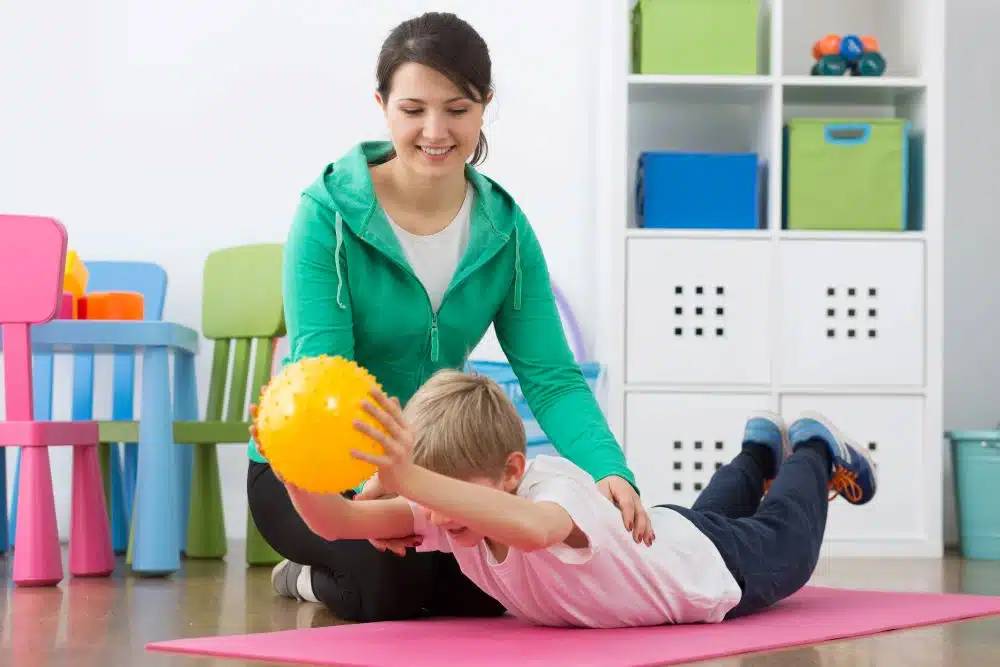
A boy receiving guided physical therapy using a ball to improve motor skills under professional supervision blueabatherapy
Better Focus: Exercise helps your brain work better. After working out, many people find it easier to pay attention and concentrate on tasks.
Feeling Proud: Learning new exercises and getting stronger gives people a sense of accomplishment. This builds confidence and makes them feel good about themselves.
Social Benefits: Making Friends and Feeling Included
Personal training isn’t just about exercising alone. It can help people with disabilities connect with others:
Learning Social Skills: Working with a trainer teaches important social skills like taking turns, following instructions, and communicating needs.
Building Trust: The relationship between a trainer and client helps people with disabilities learn to trust others and build meaningful relationships.
Feeling Less Lonely: Many people with disabilities feel isolated. Having regular sessions with a caring trainer gives them social connection and support.
Joining Group Activities: As people get more confident, they might feel ready to join group fitness classes or sports teams with other people.
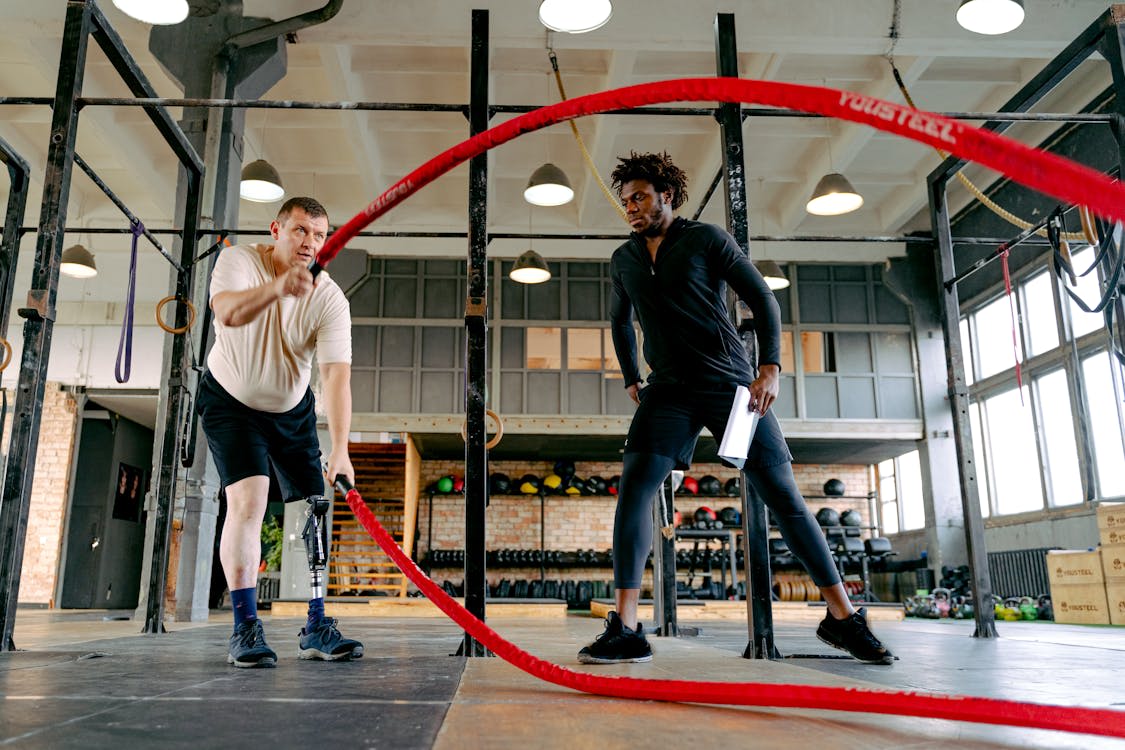
A personal trainer guides a man with a prosthetic leg through an adaptive workout using battle ropes, showing the benefits of personalized fitness training for people with disabilities specialstrong
What Makes a Good Personal Trainer for People with Disabilities?
Not every personal trainer knows how to work with people with disabilities. Good trainers who specialize in this area:
- Are Patient: They understand that learning might take longer and that’s okay
- Know About Different Disabilities: They understand how autism, ADHD, and other conditions affect movement and learning
- Use Simple Instructions: They break down exercises into easy steps and use clear language
- Make it Fun: They find ways to make exercise enjoyable rather than scary or boring
- Celebrate Small Wins: They notice and praise every improvement, no matter how small
Different Types of Exercises That Help
Personal trainers use many different types of exercises depending on what each person needs:
Strength Training: Using weights or resistance bands to make muscles stronger. For people with disabilities, this might start with very light weights or just body weight exercises.
Balance Activities: Standing on one foot, walking in a straight line, or using balance boards to improve stability.
Coordination Exercises: Activities that help different parts of your body work together better, like catching a ball or doing jumping jacks.
Cardiovascular Exercise: Activities that get your heart pumping, like walking, dancing, or riding a stationary bike.
Flexibility Work: Stretching and yoga-type movements that help keep your body loose and flexible.
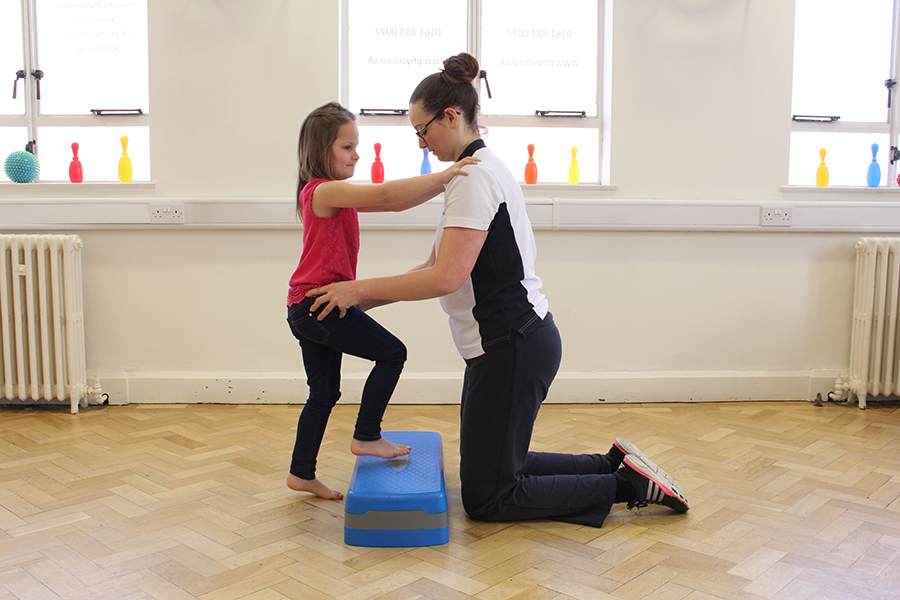
A personal trainer supports a child with a disability during a step-up exercise, highlighting the benefits of tailored physical activity and hands-on guidance asdclinic.co
Real Benefits People See
When people with disabilities work with personal trainers regularly, they often see these improvements:
- Getting dressed is easier because they’re stronger and more flexible
- Sleeping better at night because their body is tired from exercise
- Feeling happier throughout the day
- Having more energy to do things they enjoy
- Feeling more confident in their abilities
- Making new friends through fitness activities
- Learning new skills they didn’t think they could do
How Families Can Help
Families play a big role in making personal training successful:
- Be encouraging and celebrate small improvements
- Help practice exercises at home between training sessions
- Talk to the trainer about what’s working and what isn’t
- Be patient because progress takes time
- Make exercise fun by playing active games together
Getting Started with Personal Training
If you or someone you know has a disability and wants to try personal training, here are some steps to get started:
- Find the Right Trainer: Look for trainers who have experience working with people with disabilities
- Start Slow: Begin with short, easy sessions and gradually build up
- Set Realistic Goals: Focus on small, achievable goals rather than big changes all at once
- Be Consistent: Regular exercise works better than occasional intense workouts
- Communicate: Tell the trainer what feels good, what’s hard, and what you enjoy
The Bottom Line
Personal training can make a huge difference in the lives of people with disabilities. It’s not just about getting in shape – it’s about feeling better, more confident, and more connected to others. With the right trainer who understands disabilities, exercise becomes a tool for improving every part of life.
The most important thing to remember is that everyone can benefit from exercise, no matter what their abilities are. It just takes finding the right approach and the right support. Personal trainers who specialize in working with people with disabilities can provide that support and help unlock the many benefits that come from staying active and healthy.
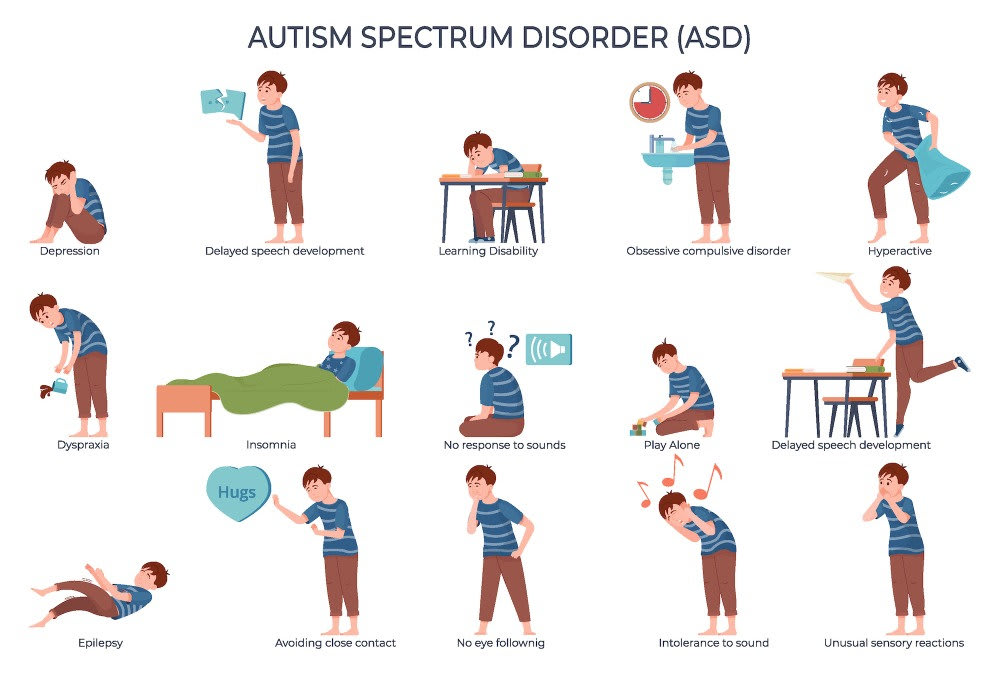
Illustrated symptoms and behaviors commonly seen in children with autism spectrum disorder (ASD) zionpt
Whether someone has autism, ADHD, or another condition that makes traditional exercise challenging, adaptive personal training can open up a world of possibilities. It’s about meeting people where they are and helping them become the strongest, happiest version of themselves.